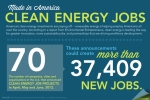
Teams of university students are exploring the hardware of plug-in hybrid electric vehicles this week at the EcoCAR 2 finals in Los Angeles, CA. | Energy Department photo, credit Myles Regan.
With all 15 EcoCAR 2 teams arriving last week to present their work to panels of expert judges, the competition finals for Year 1 are underway in Los Angeles, California.
EcoCAR 2: Plugging into the Future is a three-year collegiate engineering competition that challenges 15 student teams across North America to develop highly efficient vehicles using technologies that can save consumers money at the pump and reduce our dependence on foreign oil. Student teams explore a variety of powertrain architectures, with a focus on electric drive technology, in a pursuit to improve vehicle efficiency while retaining consumer acceptability, performance, and safety. The competition is sponsored by the Energy Department and General Motors, as well as Natural Resources Canada and 25 other industry sponsors who make this competition possible.
This year, the competition allowed students to lay a solid foundation for their designs by focusing on modeling and simulation. After selecting their vehicle architectures, teams used software and other tools provided by sponsors such as MathWorks, dSpace and Freescale to run virtual tests on their chosen designs. These sponsors not only provide tools, but also lend expertise and mentoring to the student participants. At the finals, panels of judges from sponsoring organizations and other experts in the field determine whether team designs meet the competition’s criteria. Upon the judges’ approval, each team will receive a 2013 Chevrolet Malibu, donated by General Motors, to begin the hands-on component of the competition, implementing their designs in an actual vehicle.
Teams have already demonstrated their Hardware-in-the-Loop strategies to the judges, which allow an evaluation of individual components in a simulated vehicle environment. They have also presented their outreach plans for raising public awareness, as well as their business plans, which describe how they operate their teams in a way that matches real-world automotive industry practices. Over the next few days, the teams will delve into even more technical subject matter as they present detailed plans on the mechanical, controls, and electrical systems that will support their designs. The Year 1 competition will conclude today, with winners in each of these categories and several others.
While we look forward to seeing who comes out on top in Year 1, we also anticipate seeing what the teams accomplish in Years 2 and 3, when they first integrate their systems into a “mule” vehicle and then refine their vehicles to meet consumer standards. No matter what the final outcome, we are confident that the students are all learning skills that will prepare them to design the next generation of highly efficient automobiles far beyond the competition.



